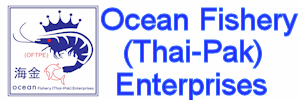About Moldova
The Republic of Moldova (known also as Bessarabia, lately
Moldavia) has a population of 3,383,332, which makes it the most
densely populated of all countries in the former USSR area. About
78% of the people are Moldovans or Romanians. Large minority groups
include Ukrainians (8.4%), Russians (5.1%) and Turks, Jews and
Bulgarians (7.3%).
Fishing in Moldova
With no direct connection to the Black Sea, fishing is limited
to the Dnister River. The total catch in 2000 was 151 tons, with
carp accounting for 87% of the landings. Commercial fishing is not a
significant part of the national economy.
Republic
of Moldova - Official website.
Government of Republic
of Moldova - Official website
Ministry of
Agriculture and Food Industry
Fishery and Aquaculture Country Profile for Moldova
- aquatic species caught by country or area, by species items, by
FAO major fishing areas, and year, for all commercial, industrial,
recreational and subsistence purposes. The harvest from mariculture,
aquaculture and other kinds of fish farming is also included.
AQUASTAT is FAO's
global information system on water and agriculture developed by the
Land and Water Division. It collects, analyses and disseminates data
and information by country and by region. Its aim is to provide
users interested in global, regional and national analyses with
comprehensive information related to water resources and
agricultural water management across the world, with emphasis on
countries in Africa, Asia, Latin America and the Caribbean.
Information for Republic of Moldova
Network of
Aquaculture Centres in Central Eastern Europe - Formed to facilitate the
R&D sphere in Central-Eastern Europe to be an integral part of the European
Research Area. Exchange of information among members (within the region).
Facilitate the transfer of information relevant to aquaculture development of
the region. Exchange of scientists with special regard to young ones. Initiate
joint research and training programs. Facilitate efforts aiming at the better
involvement of CEE institutions in European-level aquaculture development
programs. Assist the organisation of regional aquaculture meetings and
conferences. Facilitate the improvement of partnership between science and
practice, with special regard to SMEs and producers associations. Enhance the
capacity of CEE institutions to be able to initiate and run regional aquaculture
development projects supported by the EU, FAO and other international
organisations. Development collaboration between the "Network" and other
regional networks/organisations with special regard to NACA (Network of
Aquaculture Centers in Asia-Pacific). Member countries: Belarus, Czech Republic,
Hungary, Latvia, Lithuania, Moldova, Poland, Russia, Ukraine




